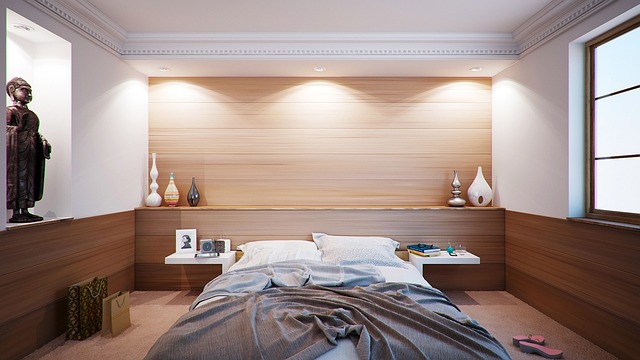Wabi-Sabi: Embracing Imperfection in Modern Home Design
The art of finding beauty in imperfection and profundity in earthiness, of revering authenticity above all, is at the heart of wabi-sabi. This ancient Japanese philosophy is making waves in contemporary Western interior design, offering a refreshing counterpoint to the polished perfection often sought in modern homes. As we delve into the world of wabi-sabi, prepare to discover how embracing the perfectly imperfect can transform your living spaces into serene, soulful sanctuaries.

The Essence of Wabi-Sabi
At its core, wabi-sabi celebrates the impermanent, incomplete, and imperfect nature of all things. In home design, this translates to an appreciation for natural materials, handcrafted items, and objects that show the patina of age and use. The wabi-sabi aesthetic embraces asymmetry, roughness, and simplicity, finding beauty in the modest and humble.
Historically, wabi-sabi emerged in 15th century Japan as a reaction against the prevailing aesthetic of lavishness and ornamentation. It was closely tied to the Japanese tea ceremony, where rustic, simple tea bowls were prized over ornate, perfect ones. This philosophy gradually extended beyond ceramics to influence architecture, interior design, and even literature.
Implementing Wabi-Sabi in Modern Interiors
Incorporating wabi-sabi into your home doesn’t mean completely overhauling your space. Instead, it’s about shifting your perspective and making thoughtful choices that align with the philosophy’s principles. Here are some ways to bring wabi-sabi into your home:
- Embrace natural materials: Opt for organic fabrics, untreated woods, and stone. These materials age beautifully, developing character over time.
- Choose handmade over mass-produced: Seek out artisanal pieces that showcase the maker’s touch. Slight irregularities in handcrafted items add charm and uniqueness.
- Let imperfections shine: Instead of hiding scratches or wear on furniture, celebrate these marks as signs of a well-lived life.
- Incorporate asymmetry: Break away from perfectly balanced arrangements. Asymmetrical displays can create a more dynamic, organic feel.
- Simplify your space: Declutter and keep only items that are truly meaningful or functional. This creates a sense of calm and allows each piece to be appreciated fully.
The Color Palette of Wabi-Sabi
Wabi-sabi interiors typically feature a muted, earthy color palette that echoes the natural world. Soft whites, warm greys, and gentle browns form the foundation, often complemented by subtle greens, blues, and terracottas. These colors create a serene backdrop that allows textures and forms to take center stage.
When selecting paint colors, look for those with depth and complexity. Avoid stark whites in favor of warmer, creamier tones. Consider using natural lime wash or clay-based paints, which add subtle texture and variation to walls.
Textures and Materials in Wabi-Sabi Design
Texture plays a crucial role in wabi-sabi interiors, adding depth and interest to simple forms. Rough-hewn wood, nubby linens, unglazed ceramics, and woven grass mats all contribute to the tactile richness of a wabi-sabi space. These materials not only look beautiful but also connect us to the natural world and the hands that crafted them.
When selecting textiles, look for natural fibers like linen, cotton, and wool in their raw, undyed states. These fabrics age gracefully, becoming softer and more beautiful with use. For furniture and decor, consider pieces made from reclaimed wood, which already bear the marks of time and use.
The Role of Nature in Wabi-Sabi Homes
Bringing elements of nature indoors is a key aspect of wabi-sabi design. This can be as simple as displaying a vase of wildflowers or a bowl of river stones. Bonsai trees, with their gnarled trunks and carefully pruned forms, embody the wabi-sabi aesthetic perfectly.
Consider creating a small indoor garden of succulents or herbs, using weathered pots or repurposed containers. Not only do these plants add life to your space, but caring for them can be a meditative practice that aligns with the mindful ethos of wabi-sabi.
Wabi-Sabi and Sustainability
The wabi-sabi philosophy aligns beautifully with modern sustainability concerns. By valuing longevity, simplicity, and natural materials, wabi-sabi encourages a move away from disposable, trend-driven consumerism. Embracing this aesthetic can lead to more mindful purchasing decisions and a deeper appreciation for the objects in our homes.
Consider shopping secondhand or vintage for unique pieces with history. Repair and mend items rather than replacing them, and look for ways to repurpose objects that might otherwise be discarded. These practices not only reduce waste but also add layers of meaning to your living space.
The Mindfulness of Wabi-Sabi Living
Perhaps the most profound aspect of wabi-sabi is its potential to change how we perceive and interact with our homes. By embracing imperfection and impermanence, we free ourselves from the endless pursuit of flawlessness. A wabi-sabi home encourages mindfulness, gratitude, and a deeper connection to our surroundings.
Take time to appreciate the subtle changes in your space – the way sunlight moves across a room, the gradual softening of linen sheets, the deepening patina on a wooden table. These small observations can become moments of quiet joy and grounding in our often hectic lives.
In conclusion, wabi-sabi offers a refreshing alternative to the pursuit of perfection in home design. By embracing imperfection, celebrating natural materials, and finding beauty in simplicity, we can create spaces that are not only visually appealing but also deeply nurturing to the soul. As we navigate an increasingly digital and fast-paced world, the timeless wisdom of wabi-sabi reminds us to slow down, appreciate the present moment, and find beauty in the perfectly imperfect nature of life.





